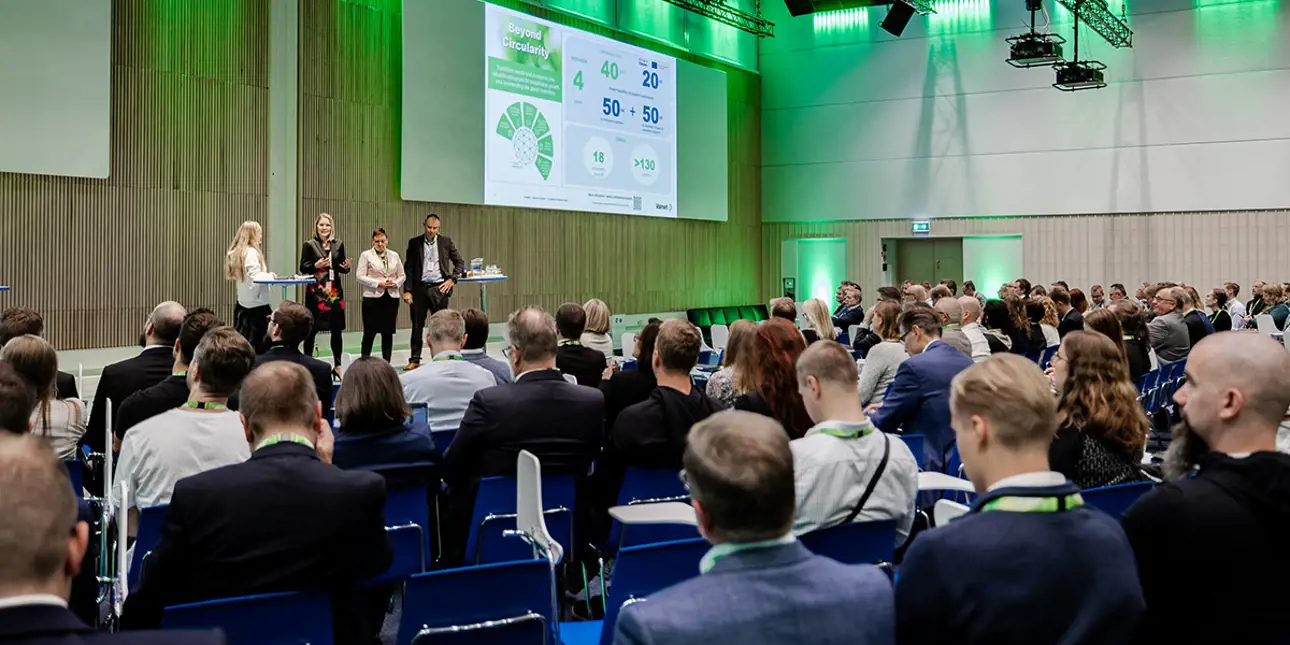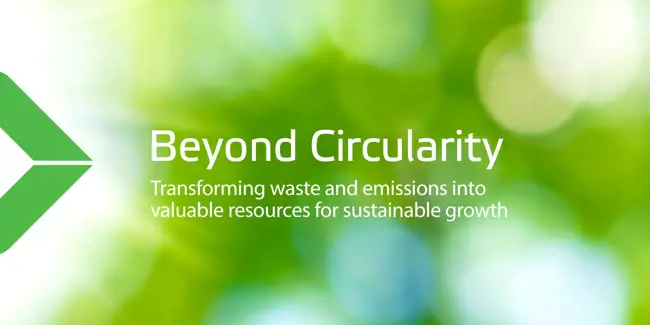Leading an ecosystem for the green transition: My experience and insights

Photo: More than 180 ecosystem partners gathered in Tampere in September to discuss and network at the Beyond Circularity ecosystem event.
Ecosystems are a powerful way of creating value, innovation and growth in today’s business world. By combining diverse skills, experiences and approaches, they can create more added value than a single company or organization.
I’ve been leading Valmet’s Beyond Circularity ecosystem for a year and have learned a lot from this experience. I believe ecosystems will be the key to organizational success in the future, and that collaborative leadership is essential to make them work.
In this blog post, I will share with you some of my experiences and insights on how to effectively build and manage an ecosystem.
What is the Beyond Circularity ecosystem?
Valmet launches a considerable number of new products every year, often developed and created in close cooperation with our partner network around the world. The Beyond Circularity program is one of the most important research and development actions and investments here at Valmet. This four-year program, co-founded by Business Finland and covering Valmet’s entire offering, aims to transform waste and emissions into valuable resources for sustainable growth and accelerate the green transition.
To achieve these ambitious goals, we’re building a Beyond Circularity ecosystem. We already have more than 20 joint projects and 130 partners, including customers, suppliers, research institutions, universities, start-ups and other stakeholders.
I see our ecosystem as a strategic vantage point for creating and leading multi-organizational collaboration, developing new working practices, and taking our customer industries and technologies forward.
Why is ecosystem collaboration important?
Valmet and our customer industries are moving into a decade with potential and opportunities but also transformational changes like the green transition and exciting growth prospects. The green transition is a global shift to a low-carbon, resource-efficient and circular economy that aims to reduce greenhouse gas emissions and environmental impacts, while creating new jobs and enhancing social well-being. This requires innovation, collaboration and leadership from different stakeholders.
Creating and participating in an ecosystem is one way of fostering the green transition. It enables the leveraging of partners’ collective intelligence, resources and capabilities to create solutions that are more sustainable, efficient and profitable. Ecosystem collaboration also helps anticipate and respond to the changing needs and expectations of our customers and society, as well as to cope with the business environment’s increasing complexity and uncertainty.
I see opportunities in the intersection between climate change, renewable energy, water and material requirements, big data analytics, and technology integrations. Our value chain members know Valmet as a reliable and creative partner. For me, these are guarantees that the rewarding journey will continue through transformational changes.
What have I learned in leading an ecosystem?
It isn’t easy. It requires the alignment of the interests and expectations of different partners, the management of their communication and coordination, and the ensuring of the quality and impact of the outcomes.
However, it’s also a rewarding and enriching experience. I’ve already learned new skills and expertise and expanded my network. I’ve connected and collaborated with a diverse and talented group of people from various organizations and backgrounds. I’ve also enjoyed the fun and excitement of working together.
Building a successful ecosystem takes time and effort. Here are some of the key lessons I’ve learned:
- Early involvement: Active discussions of the shared vision, expectations and responsibilities with stakeholders create the basis for an effective ecosystem and cross-organizational engagement. When everyone has realistic expectations about project outcomes and the time required, the ecosystem is likely to progress more smoothly.
- Vision and purpose: You need an inspiring, ambitious, and meaningful vision and purpose for all the stakeholders. It’s important to define the common goals, values and benefits, and to communicate them clearly and consistently to all the partners. This helps create a shared understanding and commitment.
- Trust and transparency: Trust and transparency are the foundation of any successful collaboration. They enable the ecosystem partners to share information, knowledge and feedback openly and honestly, as well as to respect and support each other. Trust and transparency also foster a learning and innovation culture, in which failures and mistakes are seen as opportunities for improvement and growth.
- Communication and coordination: Communication and coordination are the key to managing the ecosystem’s complexity and diversity. You need to keep ecosystem partners aware of the progress, challenges and opportunities of the joint project, as well as each other’s roles, responsibilities and expectations. Communication and coordination also facilitate the exchange of ideas, insights and best practices among the ecosystem partners, as well as the resolution of any conflicts and issues that may arise.
- Value creation and value capture: Value creation and value capture are the ultimate outcomes and measures of the ecosystem collaboration. They refer to the benefits the ecosystem partners generate and receive from the collaboration, both individually and collectively. They should be balanced and fair for all the ecosystem partners, reflecting the contributions and risks each partner takes.
For me, a successful ecosystem cannot be entirely designed – it also emerges. This means a more complex flow, more adaptability, more players to coordinate, more layers of interaction and more unintended outcomes. They’re all factors that excite me about ecosystem collaboration and Valmet’s Beyond Circularity program. As I said, I believe ecosystem collaboration is the future of business and leadership, and I encourage you to join Valmet on this journey!
Read other Beyond Circularity blog posts

